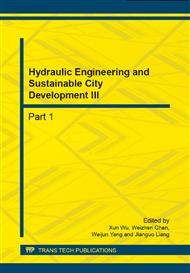p.715
p.721
p.727
p.731
p.736
p.741
p.745
p.753
p.757
Study on the Relationship between the Development of Rail Transit and the Evolution of Urban Spatial Structure: Taking Guangzhou as an Example
Abstract:
At present, rail transit in China is booming. At the same time, some big cities are undergoing a crucial stage of adjustment of urban spatial structure. Therefore, it is significant to study the relationship between the development of rail transit and the evolution of urban spatial structure. This paper reviews the development of Guangzhou rail transit and the evolution of Guangzhou urban spatial structure, and discusses the relationship between them. The conclusion is that there is interactive relationship between the development of rail transit and the evolution of urban spatial structure, and the construction and planning of rail transit should coordinate with the current condition and future planning of urban spatial structure. During network planning, the focus should not only be placed on the rail transit project itself, but the construction of a scientific and reasonable urban spatial structure, so that rail transit can contribute to sustainable urban development.
Info:
Periodical:
Pages:
736-740
Citation:
Online since:
September 2014
Authors:
Price:
Сopyright:
© 2014 Trans Tech Publications Ltd. All Rights Reserved
Share:
Citation:


